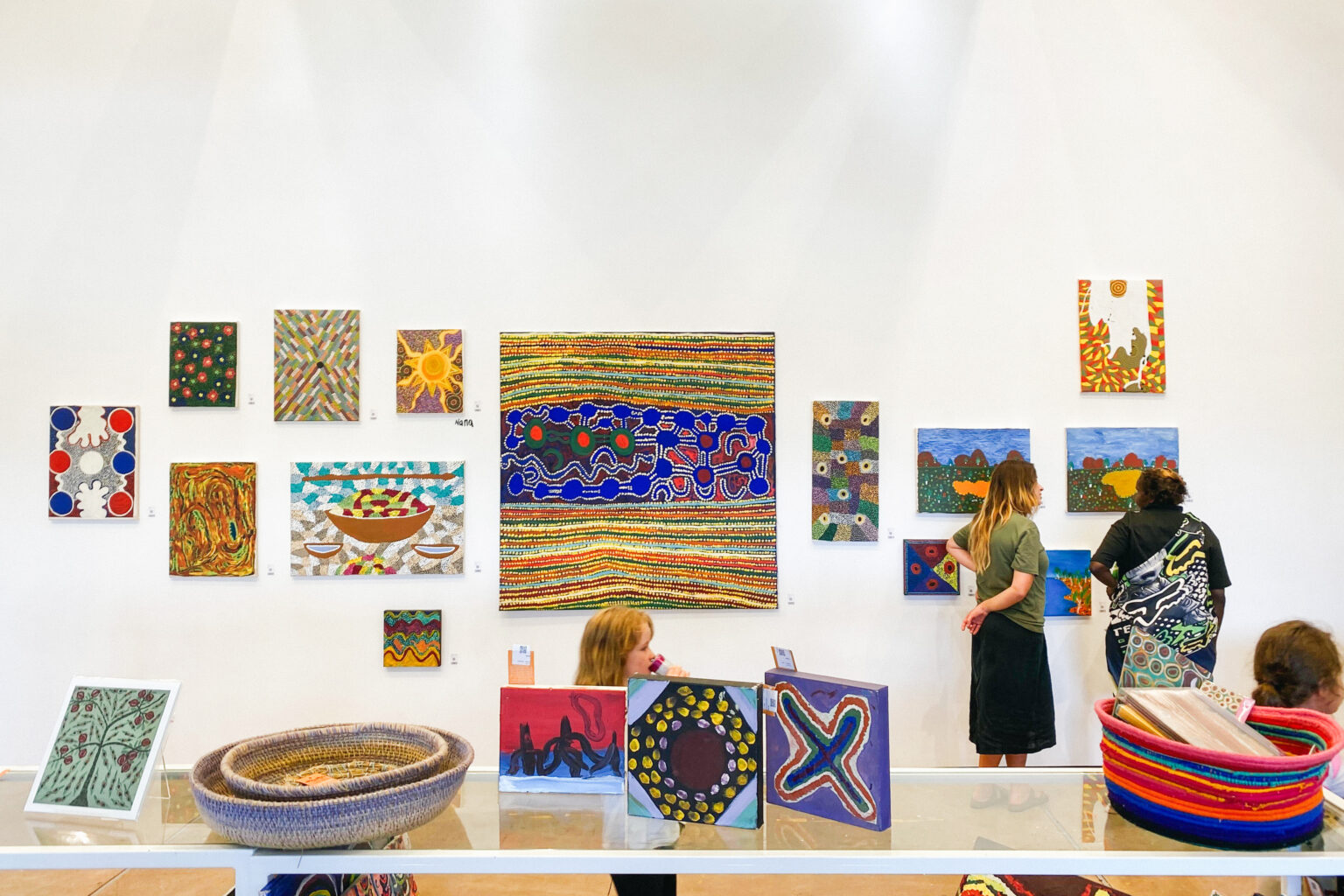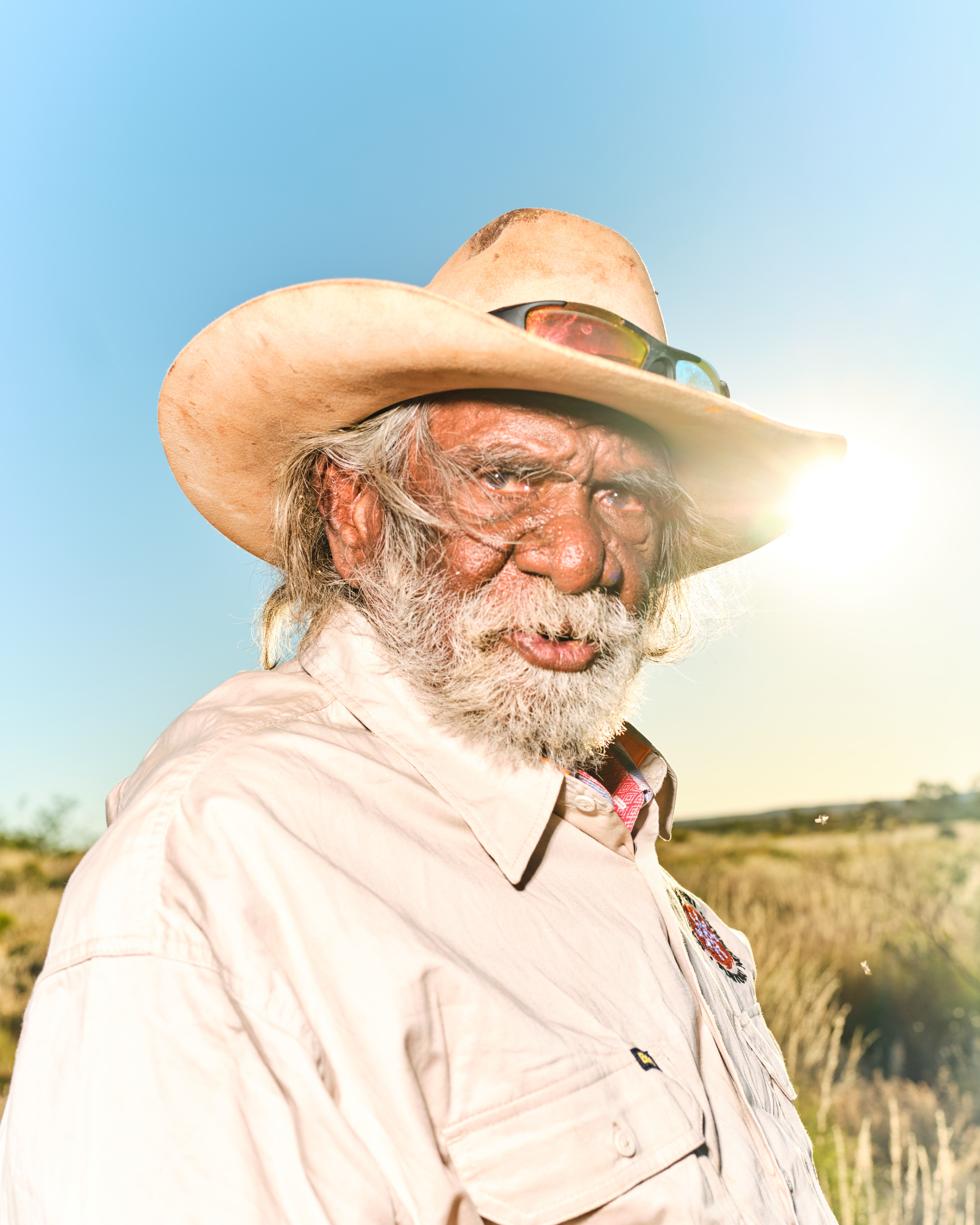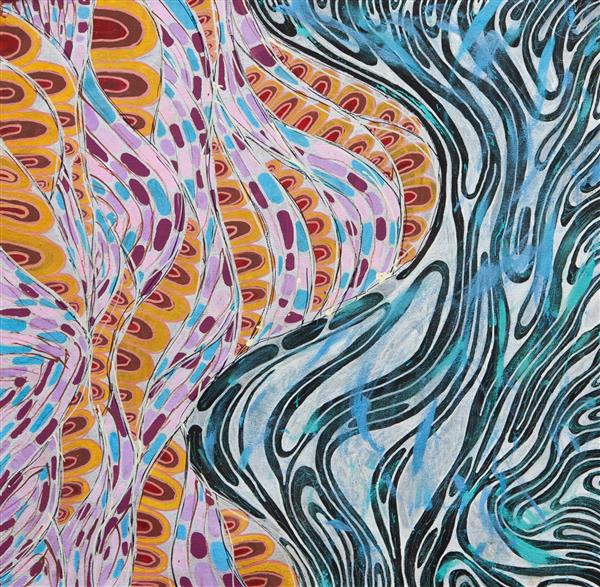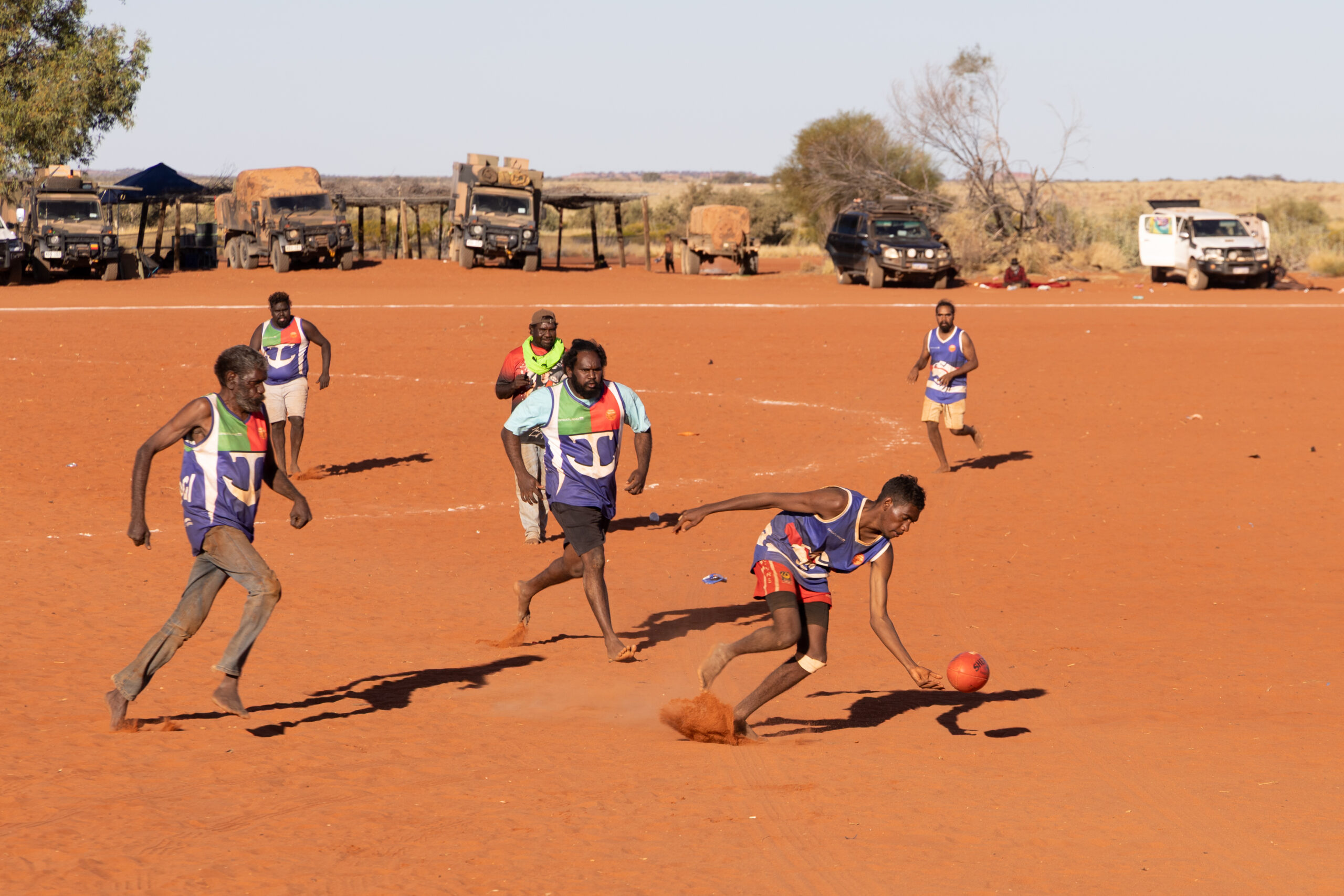
The latest exhibition Following in footsteps at the Martumili gallery, looks at the legacy of the Martu elders who were instrumental in setting up Martumili Artists. They have inspired and taught the next generation of artists. Following in footsteps shows how rights to land, to ngurra (home Country, camp) and painting styles are all interconnected and passed down through families.
For Martu the term for family, walytja, encapsulates a broader idea of relatedness that permeates every aspect of life. Over thousands of years, Martu lived in small, kin-based bands that traversed their own territorial areas by foot according to seasonal changes and cultural obligations. Ngamaru Bidu describes this experience in the story for her work, ‘Wantili’; “My family and Jakayu’s family been walking round there together… Everywhere, we been walking everywhere.”
Walytja groups had rights to their ngurra (home Country, camp) as inherited over generations. Also passed down over generations was the intimate knowledge of the physical and cultural properties of one’s Country, and the responsibility to care for and nurture one’s ngurra. The passing of rights and responsibilities through walytja in relation to specific lands continues today.
Many of the works by Martumili artists are representations of Country as defined by familial ties- artists paint “where their family is from and where they belong to” (Kuru Gladys Bidu). One’s Country encompasses their birthplace, and the Country they and their family lived on during the pujiman era. Collectively these works make clear the inseparable relationship between walytja and Country.
The significance of walytja is revealed in Martu art not only in its depiction of ngurra as delineated by ancestral inheritance, but also through the act of painting itself. Martumili artists begin to paint with their parents, grandparents and extended family, fostering an organic process of learning about painting techniques, along with knowledge of specific locations and their related Jukurrpa narratives. In this way, the passing down of cultural knowledge through art ensures the continuity of Martu heritage.
Through grouping family relations via paintings, Following in footsteps demonstrates the interconnectedness of painting styles, Country and family relations. This can be seen strongly between the artwork of Bugai Whyoulter and Cyril Whyoulter her grandson. In these two paintings both artists depict Wantili (Warntili, Canning Stock Route Well 25). “This is my Grandmother’s [Bugai Whyoulter’s] Country, my Country. She was a young girl walking around at Wantili. Wantili is good for painting and telling stories. Our stories are still strong.” – Cyril Whyoulter
Country is inherited as is painting styles, from Grandmother to grandson. Bugai’s distinct dotting has been adopted in Cyril’s painting whilst also adding his own unique mark. A gentle nod to his grandmother whilst also staking claim as a next generation artist.
Following in footsteps is on now at the Martumili Gallery in Newman, WA. On now until 23rd June
Words by Zoe Martyn and Ruth Leigh.




